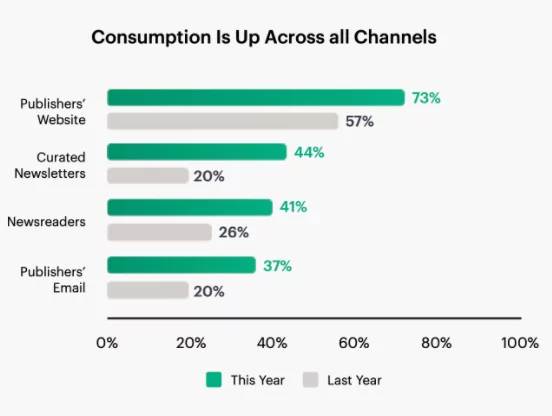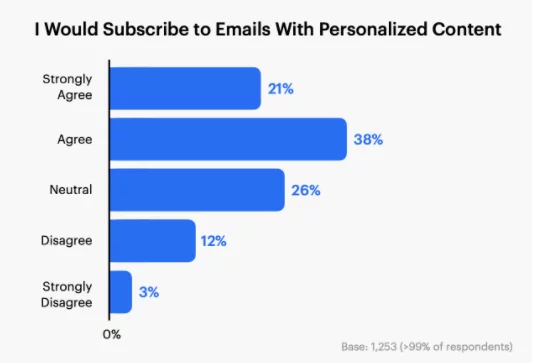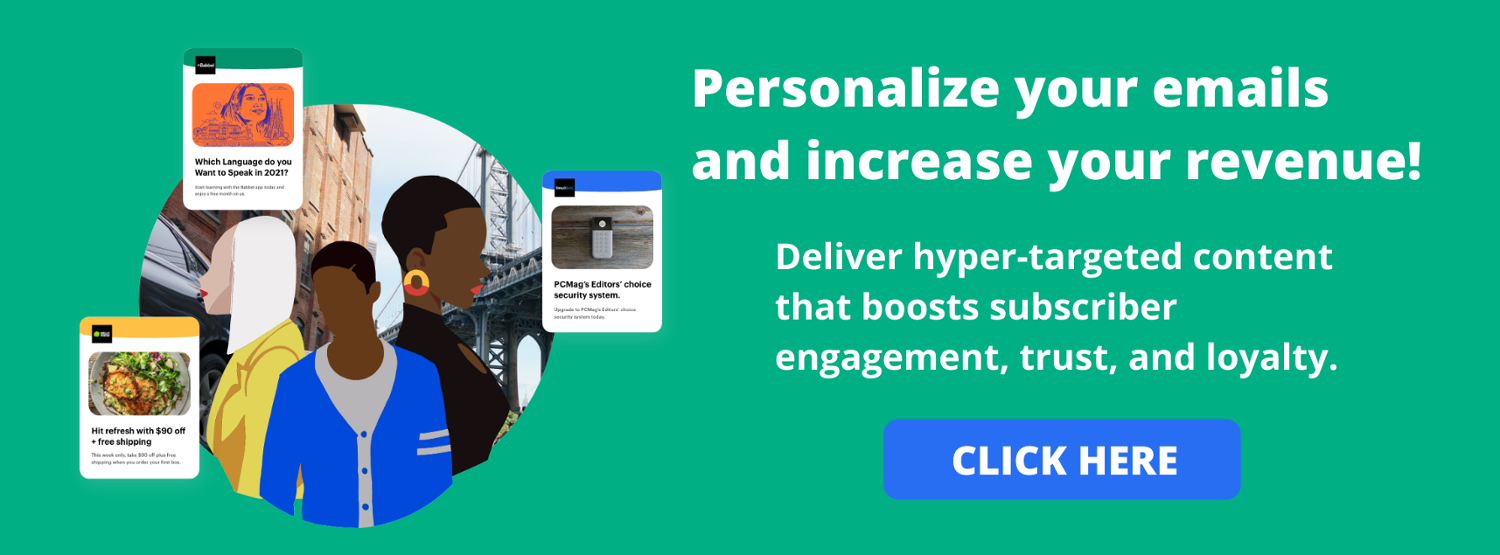It’s time for a quick reality check.
As a publisher, you’ve probably been going nonstop — preparing for the death of the cookie, creating a first-party data strategy, and building that list of subscribers.
But before you go any further, just take a moment to ask this: Are you making email personalization easy or hard for yourself? Or, better put, are you using the right personalization technology to automate your strategies and propel your email operation forward?
As Jeeng found in our 2022 Digital Publishing Consumer Survey Report, email engagement is booming. A growing number of U.S. adults are paying for subscriptions to digital publishers and email newsletters. Why? Because they crave personalized content and they see email as a critical information source.

Publishers have a major opportunity to reach these growing audiences on email and inch out their competitors with targeted and relevant communications. But — in order to do that — they have to change the way they think about marketing personalization.

That means they need to make sure they’re using the most comprehensive personalization technology platforms — ones that can help them automatically gather customer data, build consumer relationships, and unlock new revenue opportunities across digital channels.
Wondering if you’re ready to revamp your personalization tools?
Here’s what you need to know.
What is personalization technology?
Simply put, marketing leaders have two options for creating personalized experiences: the easy way and the hard way.
The hard way looks like this: You manually collect customer data from different touchpoints, analyze it to create audience segments, decide which segments get to see certain campaigns, build those campaigns, and then continue to track performance over time.
Technically, the steps are right. But the tools and processes are all wrong.
That’s where personalization technology comes in. With the right platforms at your fingertips, you can do things…well, the easy way. Meaning, you can automate all those steps — saving time, money, and resources. Also, you can use advanced technologies like artificial intelligence and machine learning to gather game-changing insights for optimization.
As the IT Services Marketing Association found, a B2B marketer’s personalization toolbox usually contains platforms for:
- Web analytics
- Marketing automation
- Sales insights and intelligence
- Landing page optimization
- Customer data analytics
- Predictive analytics
Why is personalization technology so important?
The future of personalization is here. Predictions from past years like the rise of first-party data, email marketing sophistication, and multichannel experiences are happening now. And every publisher needs a robust personalization strategy if they want to survive and adapt to ever-changing consumer habits.
According to our study, 77% of U.S. adults now check their email several times a day — up from 67% last year. And email is their preferred channel from receiving real-time alerts. Why? Because it’s trustworthy, reliable, and personalized.

In fact, over half also want email newsletters from publishers to be tailored to their personal interests — an increase from 42% last year. Going further, almost half of people who pay for a subscription to an online publication or email do so because they want the content to be personalized to their interests.

Personalization software is also crucial for helping publishers reach specific customer segments and website visitors. Just look at millennials. They’re more invested in personalization than any other generation is. According to our report, millennials are more open to receiving real-time email alerts, clicking on ads within email newsletters, and paying for a subscription that offers personalized customer experiences.
So, the writing is on the wall: Publishers need to be rewiring their personalization efforts with new technologies. On email specifically, they can position themselves to grow their audiences, boost customer retention, and nurture relationships through this one-to-one marketing channel.
How does technology make personalization easier?
The right personalization tools offer a range of features and services that help you meet your business goals and execute personalization at scale.
More specifically, email personalization technology should be equipped to:
- Source valuable data about customer behavior. Your platform should gather data from your website and email newsletters to gain a comprehensive view of customer preferences and interests.
- Build audience segments for targeted outreach. Personalization technology can group data by audience demographics, behaviors, and contexts.
- Use AI to send the right message at the right time. An AI-based algorithm should be able to pinpoint the best placement for each marketing campaign, helping you increase engagement and revenue.
3 tips for personalizing emails with Jeeng
Jeeng is built to make personalization easy for you. All it takes is one line of code on your website, and our platform gets to work — learning about your audience’s interests and needs, and automatically serving them personalized experiences.
In fact, to get the most out of Jeeng’s personalization tools, try these best practices:
- Focus on first-party data strategies. Build your email subscriber list to collect one of the most valuable pieces of first-party data: the email address. This is particularly important now that third-party data sources are being disabled on Google Chrome and publishers will need new ways to track and target their audiences.
- Launch campaigns across multiple channels. Don’t stop at just email. Create connected, cross-channel experiences through other high-engagement properties and formats like your website, browser push notifications, and newsreader apps on mobile devices.
- Monetize your emails with personalized ads. Generate revenue from your email newsletters by filling them with ad inventory and personalized recommendations from trusted brand partners.
Ready to build your own personalized email campaigns with Jeeng? Contact us to learn more.


